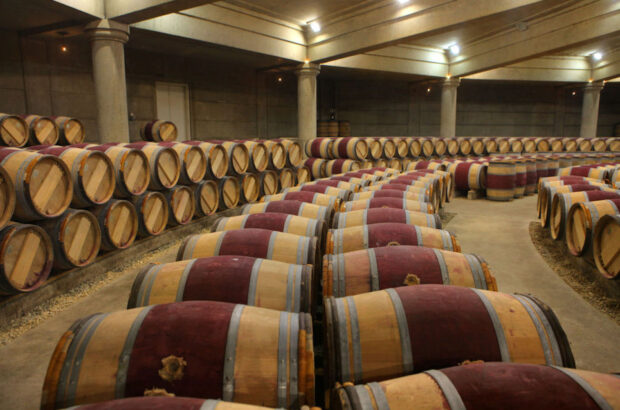For the project, the Champagne house is partnering with French glassmaker Verallia, which boasts 32 glass production facilities in 11 countries and claims to be the world’s third-largest producer of glass packaging for beverages and food products.
‘Telmont is a traditional house that embraces innovation, especially when it enables us to reduce our carbon footprint, [and] Verallia… also shares these values,’ said Ludovic du Plessis, president of Telmont House. ‘I sincerely hope that what we are testing today, with this lighter 800g bottle, will be a step forward for the Champagne region.’
The current weight of 835g is a relatively recent innovation in the Champagne region. This bottle only appeared in 2010, when the Comité Interprofessionnel du vin de Champagne (CIVC), which represents the region’s producers and trade, announced its launch in a bid to reduce the environmental impact of Champagne sparkling wines. At the time, the bottle represented a 7.2% weight decrease from the original 900g. It was adopted by several houses following its release.
Telmont’s goal is to bring the weight of its 835g bottles down to 800g, while leaving their appearance and shape virtually unchanged.
According to the Champagne house, glass bottles are the principal source of Telmont’s carbon footprint, corresponding to about 20% of its overall emissions of CO2.
The project involves testing the new bottle to ensure the reduced weight can withstand the pressure of about 6kg per square centimetre generated by the sparkling wine’s CO2 content.
A preliminary trial involving a sample of 3,000 bottles was recently carried out at the Telmont estate. The house will be monitoring the batch’s performance over the next six months and, should the bottles pass each step of the test – including ageing time in the cellar – the new bottle will be approved for sale.
‘We are thrilled to partner up with Champagne Telmont who is offering us a remarkable life-size testing ground,’ said Axel Guilloteau, sales and marketing director at Verallia France. ‘The Champagne bottle is a symbol. But that doesn’t mean it shouldn’t evolve, stepping up to meet today’s challenges.’
If successful, the first lighter-weight bottles will be used on this year’s batch of Telmont Réserve Brut, due for release three years from now in 2025.
The announcement of the new lighter-weight bottle is the latest in a series of green initiatives – launched last year – that Telmont claims motivated American actor and film producer Leonardo DiCaprio to invest in the brand in February this year.
Telmont’s environmental projects involve eliminating superfluous packaging and gift boxes; replacing transparent bottles made entirely with virgin glass with classic green Champagne bottles made with 85% recycled material; rethinking the supply chain to limit associated greenhouse gas emissions; selecting transporters according to their ‘corporate social responsibility’ (CSR) score; using 100% green energy; and converting the Telmont estate to 100% organic viticulture by 2031.
Telmont’s new bottle might represent a significant step forward to reduce carbon emission in Champagne, however lighter-weight sparkling wine glass bottles are already available elsewhere. In May last year, a partnership between Australian glass packaging company Orora and Vinpac International – the wine bottling and packaging arm of Endeavour Group – released a lighter sparkling wine bottle weighing an impressive 580g.






